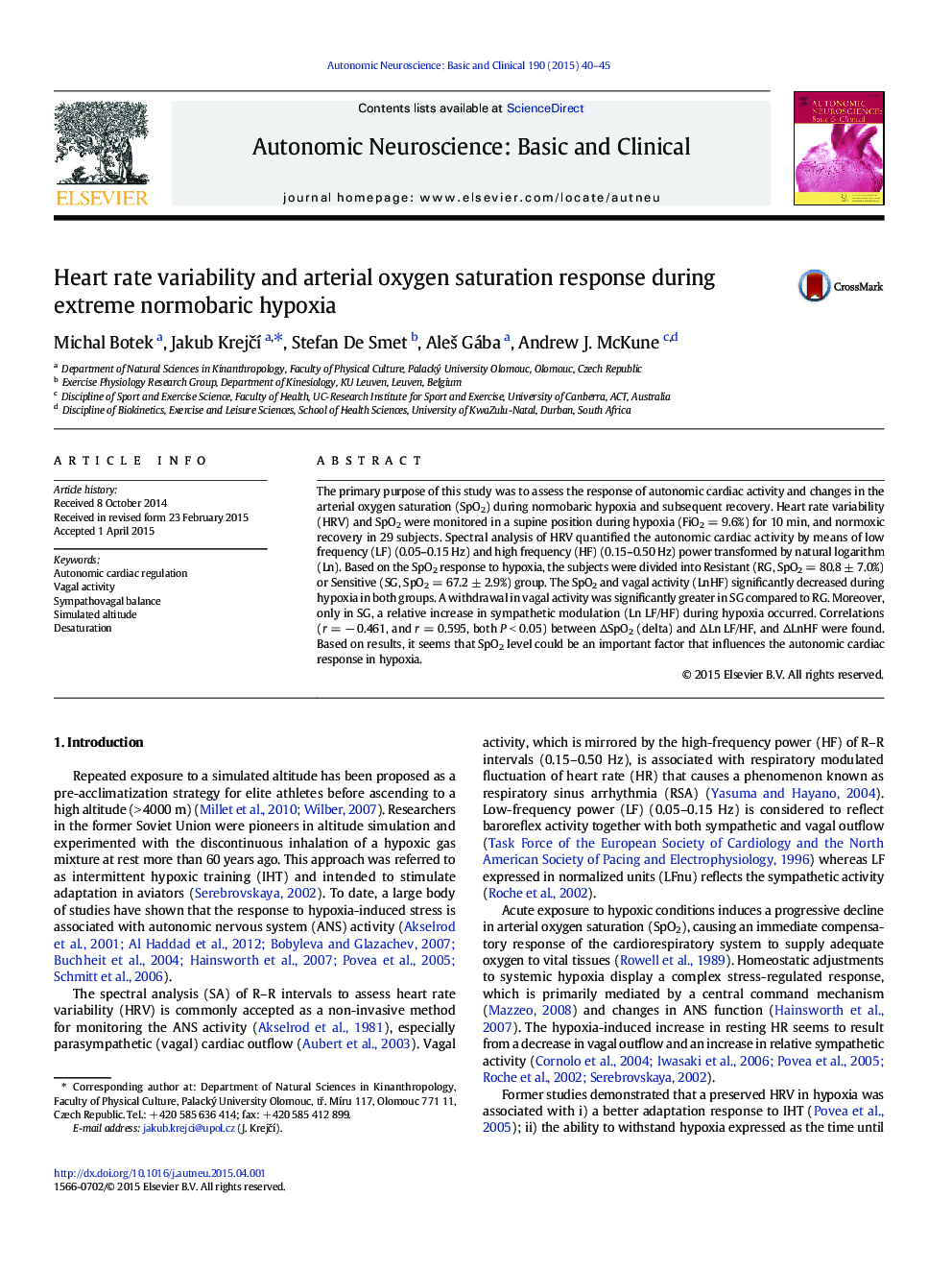| Article ID | Journal | Published Year | Pages | File Type |
|---|---|---|---|---|
| 3034462 | Autonomic Neuroscience | 2015 | 6 Pages |
Abstract
The primary purpose of this study was to assess the response of autonomic cardiac activity and changes in the arterial oxygen saturation (SpO2) during normobaric hypoxia and subsequent recovery. Heart rate variability (HRV) and SpO2 were monitored in a supine position during hypoxia (FiO2 = 9.6%) for 10 min, and normoxic recovery in 29 subjects. Spectral analysis of HRV quantified the autonomic cardiac activity by means of low frequency (LF) (0.05-0.15 Hz) and high frequency (HF) (0.15-0.50 Hz) power transformed by natural logarithm (Ln). Based on the SpO2 response to hypoxia, the subjects were divided into Resistant (RG, SpO2 = 80.8 ± 7.0%) or Sensitive (SG, SpO2 = 67.2 ± 2.9%) group. The SpO2 and vagal activity (LnHF) significantly decreased during hypoxia in both groups. A withdrawal in vagal activity was significantly greater in SG compared to RG. Moreover, only in SG, a relative increase in sympathetic modulation (Ln LF/HF) during hypoxia occurred. Correlations (r = â 0.461, and r = 0.595, both P < 0.05) between ÎSpO2 (delta) and ÎLn LF/HF, and ÎLnHF were found. Based on results, it seems that SpO2 level could be an important factor that influences the autonomic cardiac response in hypoxia.
Related Topics
Life Sciences
Neuroscience
Cellular and Molecular Neuroscience
Authors
Michal Botek, Jakub KrejÄÃ, Stefan De Smet, AleÅ¡ Gába, Andrew J. McKune,
